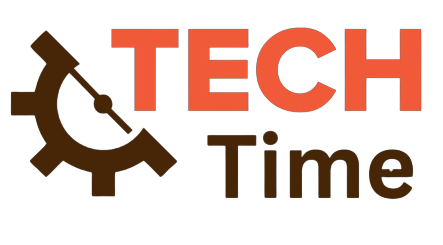Enhancing Productivity with Digital Workspace Optimization Strategies
Introduction to Digital Workspaces
The contemporary workplace has dramatically evolved, with digital workspaces taking center stage. These innovative platforms afford businesses unparalleled productivity and collaboration, regardless of geographic barriers. Utilizing a suite of digital workspace tools, companies are better equipped to meet the demands of the dynamic market and remote work landscape. This digital pivot is not just about adopting new technologies but also reflects a more profound operational paradigm shift, where the virtual workplace is carefully crafted to support and enhance an organization’s strategic goals.
Gone are the days when physical presence within the office walls was a prerequisite for effective collaboration and productivity. Digital workspaces echo the cultural transformation of the workplace, embracing flexibility and technological integration. Monitoring and optimizing these workspaces ensure that they remain dynamic and responsive environments, delivering streamlined operations, improved team collaboration, and significant efficiency gains. The proper digital workspace provides a nexus for communication and operational tools, creating a centralized hub for employees and facilitating a seamless flow of information.
Critical Components of a Robust Digital Workspace
Fostering a robust digital workspace is akin to assembling a complex puzzle; every piece must align perfectly for the overall picture to emerge. The essential components include a carefully selected stack of technologies and applications that together form a cohesive platform for company operations. These tools must be functionally comprehensive and interoperable, from project management systems and cloud storage solutions to real-time communication software. Moreover, these components should offer a user-friendly experience, which is critical to ensuring that all team members, regardless of their technical expertise, can leverage the full range of digital workspace functionalities. Enhanced collaboration and productivity result from a well-oiled machine where each element of the digital workspace works in concert.
Measuring and Improving Workspace Performance
An effective optimization strategy relies on the ongoing assessment of workspace performance. Leveraging user analytics and performance data allows organizations to make informed decisions about adjustments and enhancements to the digital workspace. Digital workspace monitoring tools enable real-time operational metrics tracking, providing insights into user engagement, application performance, and workload capacity. This continuous feedback loop is essential for recognizing and rectifying inefficiencies, ensuring that digital workspaces consistently align with productivity goals and evolving needs. Businesses can better support their workforce through this data-driven approach and foster a high-performing digital environment.
The Impact of Digital Workspace on Employee Satisfaction
The symbiotic relationship between digital workspace optimization and employee satisfaction cannot be understated. Employees are increasingly seeking flexibility in their work environments, and a digital workspace that offers autonomy and adaptability can be a critical factor in job satisfaction and retention. As digital workspaces mature, they become more personalized, providing a tailored experience that aligns with individual workflows and preferences. This personalization is critical to creating an environment in which staff members are eager to engage, leading to higher satisfaction and productivity.
Security Concerns in Digital Workspace Environments
As digital workspaces become the norm, the imperative for stringent security protocols grows exponentially. The intersection of accessibility and security is delicate; companies must protect sensitive data and intellectual property while ensuring employees have the access they need to be productive. Robust security measures, including encryption, multi-factor authentication, and continuous monitoring for threats, are essential components of a secure digital workspace. Regular security audits and updates are necessary to stay ahead of potential vulnerabilities, ensuring that the digital workspace remains a bastion of efficiency and reliability without compromising the safety of the organization’s digital assets.
Overcoming Common Challenges in Digital Workspace Implementation
Transitioning to a digital workspace can bring a range of challenges to the surface, from technical integration issues to human factors like resistance to change. Addressing these challenges head-on with a comprehensive change management strategy is crucial. Ensuring that the digital workspace integrates seamlessly with existing systems and workflows is the first step toward frictionless adoption. Furthermore, crafting a meticulous training program and offering support can facilitate smoother user experiences and encourage a positive reception. By anticipating potential barriers and proactively planning to address them, organizations can mitigate the risk of implementation setbacks and set the stage for a successful digital transformation.
Future Trends in Digital Workspace Technology
The future of digital workspace technology is brimming with potential, shaped by advancements in AI, machine learning, and the Internet of Things (IoT). Artificial intelligence and automation bring unprecedented customization and efficiency, with systems adapting to users’ work habits and preferences. Coupled with the increasing trend of IoT devices, digital workspaces will evolve to become more intuitive and interconnected, streamlining operations and offering previously unattainable insights.
How Organizations Can Start the Digital Workspace Journey
The journey towards a digital workspace is both strategic and tactical. It begins with a thorough assessment of the current workplace technologies, processes, and culture, followed by identifying digital workspace tools that align with the company’s vision and objectives. A step-by-step implementation strategy is essential, often involving a phased approach that can be adapted based on early results and feedback. This systematic progression allows for fine-tuning and course corrections, ensuring that the digital workspace evolution meets the organization’s and its employees’ unique needs. With a clear vision and careful planning, businesses can navigate the complexity of digital workspace implementation and emerge with a platform that propels them into a future of enhanced productivity and collaboration.
Case Study: Successful Digital Workspace Transformation
Real-world examples of digital workspace transformation offer valuable insights into the tangible benefits and implementation strategies that lead to success. By examining case studies across various industries, businesses can glean best practices and common pitfalls, learning from the experiences of others. These narratives often reveal positive outcomes, such as elevated productivity, reduced operational costs, and improved employee morale, that can result from an effectively optimized digital workspace. Whether it’s a global enterprise or a nimble startup, the lessons learned from these transformations are universally applicable. They can inform the strategies for businesses embarking on their digital workspace journey.
Conclusion: Harnessing Digital Workspace for Sustainable Success
The potential for optimized digital workspaces to drive sustainable business success is vast. By delivering an efficient, flexible, and engaging platform, organizations can accelerate productivity and foster a culture of innovation. The key to reaping these benefits lies in a commitment to continuous improvement, an openness to adopting emerging technologies, and a focus on creating an environment that resonates with the workforce. As businesses look toward the future, those who embrace and effectively implement digital workspaces will position themselves at the forefront of their respective industries, ready to capitalize on the opportunities.
Stay in touch to get more updates & news on Tech Times!






